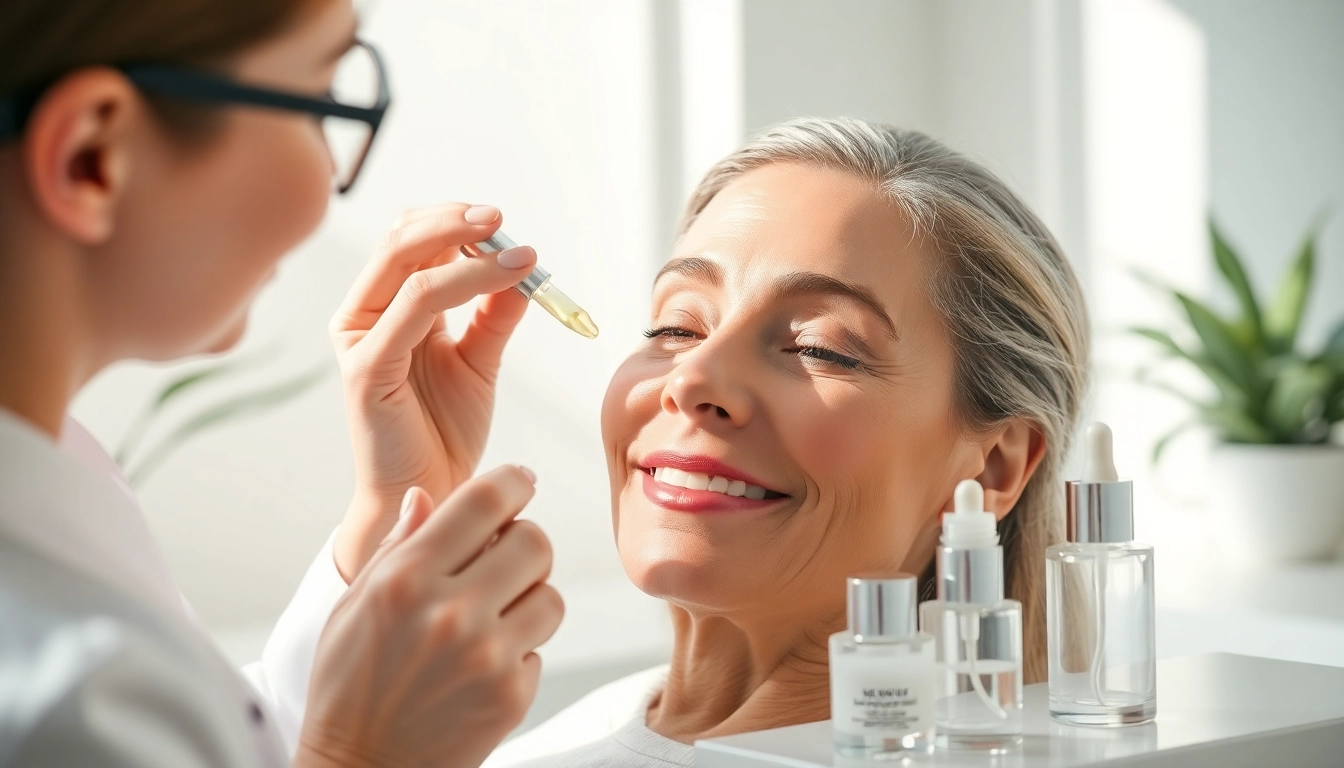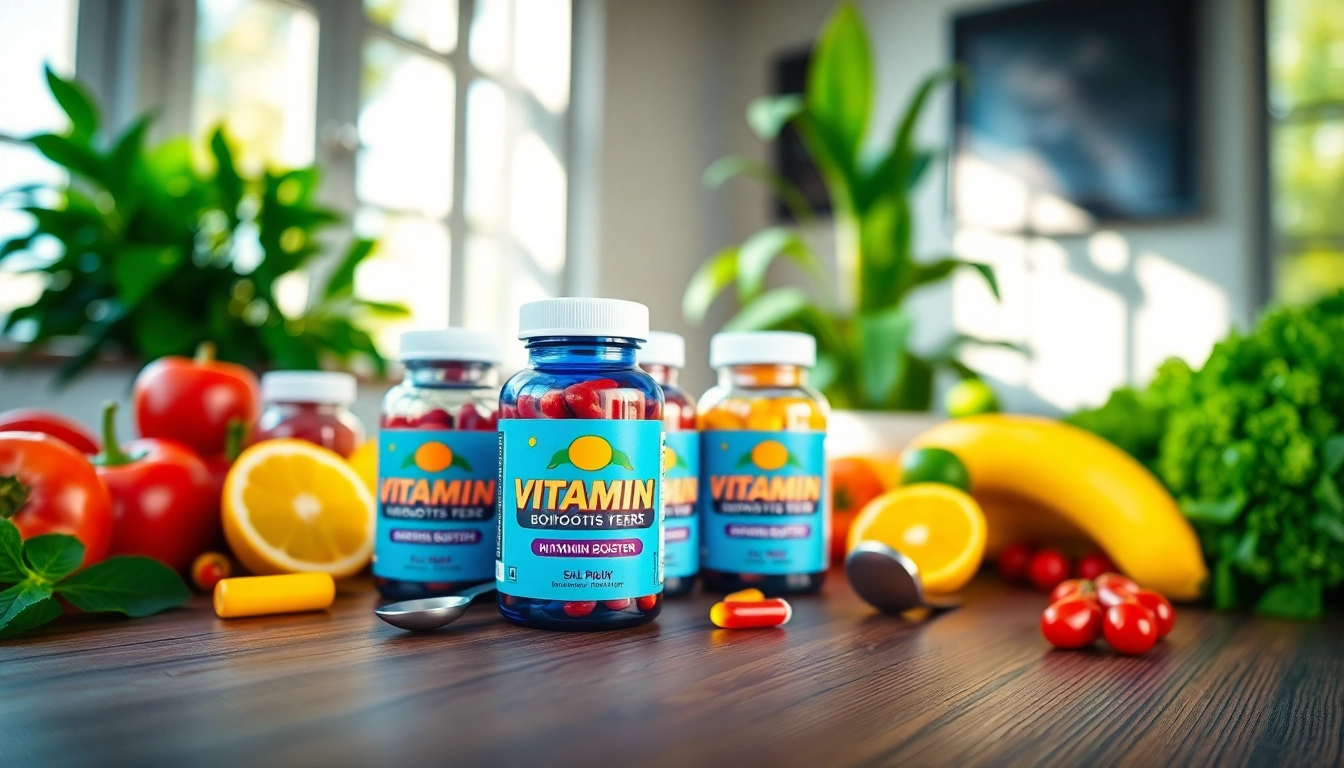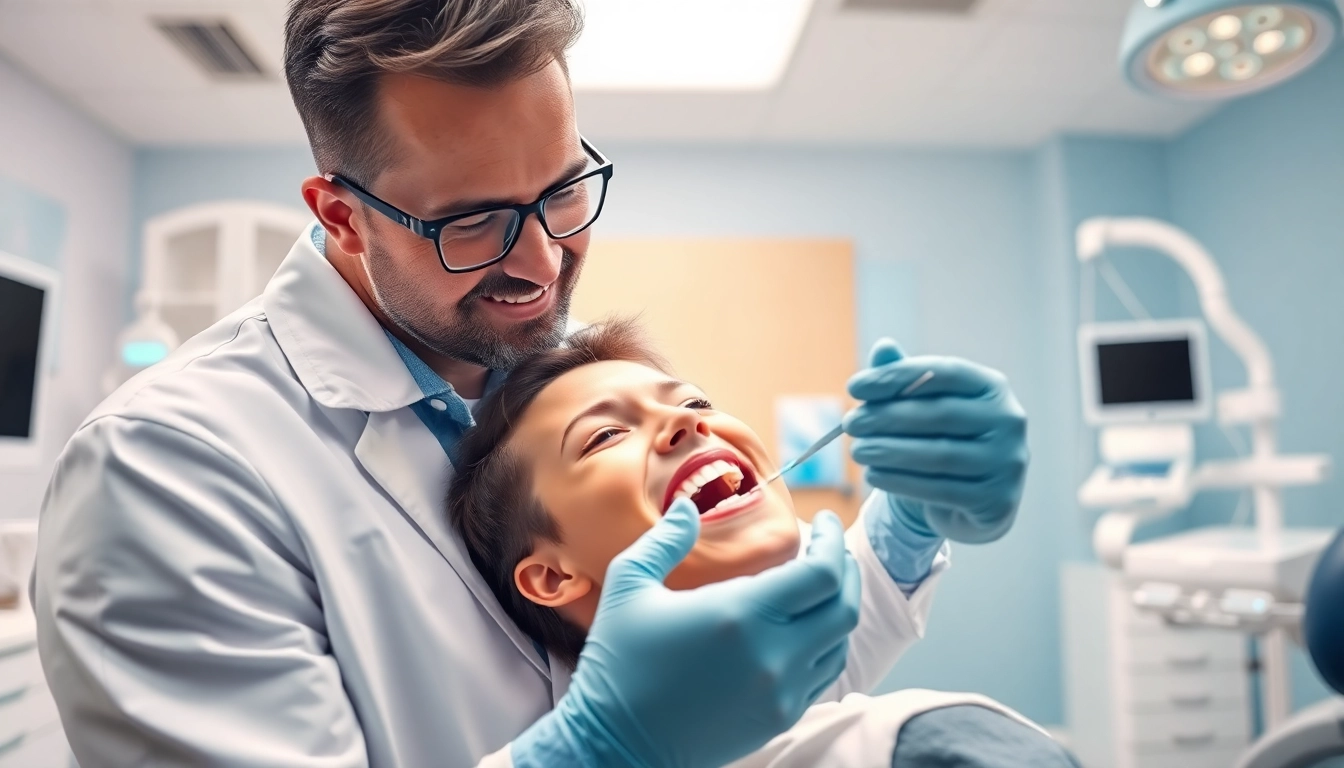Understanding Wrinkle Treatments
Wrinkles are an inevitable part of aging, but understanding their causes and exploring various treatment options can empower individuals to combat their appearance. At the core of this knowledge is the recognition that wrinkles form due to a combination of intrinsic aging factors, environmental influences, and lifestyle choices. The world of Wrinkle Treatments offers a plethora of solutions, both non-invasive and surgical, to restore youthful-looking skin. This article delves into the reasons behind wrinkle formation, types of treatments available, and strategies to help you maintain a youthful glow.
What Causes Wrinkles?
The development of wrinkles is attributed to various factors, both internal and external. Key contributors include:
1. Aging Process: As individuals age, the skin naturally loses collagen and elastin, two proteins critical for maintaining skin’s firmness and elasticity. This loss leads to sagging and the formation of fine lines and deeper wrinkles.
2. Sun Exposure: Ultraviolet (UV) rays from sun exposure can damage skin cells and accelerate the aging process. Prolonged sun exposure is a major cause of premature wrinkles, particularly in areas frequently exposed, like the face and neck.
3. Lifestyle Factors: Habits such as smoking and excessive alcohol consumption degrade skin quality. Smoking reduces blood flow to the skin, while alcohol dehydrates it, leading to a dulled appearance and increased wrinkle formation.
4. Facial Expressions: Repetitive facial movements, like squinting and frowning, create grooves beneath the skin surface. Over time, these grooves turn into permanent wrinkles.
5. Diet and Hydration: A diet lacking in essential nutrients can negatively affect skin health. Hydration is equally important; dry skin is more prone to wrinkles.
The Different Types of Wrinkle Treatments
With a better understanding of the causes of wrinkles, exploring the diverse types of wrinkle treatments is essential. Treatments range from simple topical applications to advanced medical procedures, including:
1. Topical Treatments: These include over-the-counter creams and serums enriched with active ingredients like retinoids, hyaluronic acid, and peptides. They work primarily to hydrate and plump the skin while improving skin texture and tone.
2. Injectable Treatments: Popular non-invasive options like Botox and dermal fillers fall into this category. Botox works by temporarily paralyzing facial muscles, reducing the appearance of dynamic wrinkles. Dermal fillers add volume to specific areas, smoothing fine lines and restoring facial contours.
3. Chemical Peels: This involves applying a chemical solution to exfoliate the top layer of skin. It enhances skin texture and reduces the appearance of fine lines.
4. Laser Treatments: Lasers can stimulate collagen production, tighten skin, and reduce discoloration. They are effective for deeper wrinkles and can provide long-lasting results.
5. Microneedling: This technique uses fine needles to create micro-injuries in the skin, triggering the body’s healing response and promoting collagen production.
How to Choose the Right Treatment for You
Choosing the best wrinkle treatment varies based on individual skin types, concerns, and personal preferences. Here are a few key considerations:
1. Skin Type: Understanding whether your skin is oily, dry, or combination can guide your choice. For instance, individuals with oily skin may benefit more from chemical peels, while those with dry skin might seek hydrating creams or fillers.
2. Severity of Wrinkles: Assess whether your wrinkles are fine lines or deeper creases. For minor signs of aging, topical treatments may be sufficient, while deeper wrinkles may necessitate fillers or laser treatments.
3. Lifestyle: Consider your daily activities and how they may affect recovery time. Injectables and laser treatments often require some downtime, whereas topical treatments can be incorporated into daily routines.
4. Budget: Treatments vary widely in cost. Topical products offer a less expensive solution, while professional procedures can be more of an investment.
5. Consultation with Professionals: Before making a decision, consult with a qualified dermatologist or aesthetic professional. They can assess your skin and recommend tailored treatment plans.
Popular Non-Invasive Wrinkle Treatments
Non-invasive treatments have surged in popularity as they offer effective results with minimal downtime. Below are some of the top non-invasive options.
Botox: How It Works and What to Expect
Botox is famously known for its wrinkle-reducing abilities, particularly in the forehead and around the eyes. It operates by:
– Mechanism: Administered via injection, Botox blocks signals from the nerves to the muscles. This temporary paralysis relaxes the muscles that lead to the formation of wrinkles, resulting in smoother skin.
– Treatment Overview: The procedure is relatively quick, taking about 10-15 minutes. The results can be seen within a few days, with a lasting effect of three to six months.
– Possible Side Effects: Side effects are minimal but can include swelling, bruising, or headache. Aftercare involves avoiding strenuous exercise and excessive sun exposure for a short period.
– Results: Smoother skin with fewer fine lines, restoring a more youthful appearance.
Dermal Fillers: Benefits and Considerations
Dermal fillers offer immediate results by restoring lost volume and smoothing out wrinkles. Here’s a deeper look:
– Types: Various fillers exist, such as hyaluronic acid, calcium hydroxylapatite, and poly-L-lactic acid, each having distinct properties and longevity.
– Usage: Fillers are commonly used in areas such as the nasolabial folds, marionette lines, and cheeks. The procedure typically takes under an hour with little discomfort.
– Durability: Depending on the filler type, results can last from six months to two years, making it a relatively low-commitment option.
– Side Effects: While generally safe, potential side effects include bruising, swelling, or lumpiness at the injection site.
– Expert Tips: Always choose a certified specialist for the procedure to minimize risks and achieve desired outcomes.
Facials and Chemical Peels: A Gentle Approach
For those seeking less invasive treatments, facials and chemical peels provide a gentle alternative:
– Facials: Professional facials can incorporate a variety of techniques including extraction, exfoliation, and hydration. They promote circulation, relax facial muscles, and improve overall complexion.
– Chemical Peels: There are three main types – superficial, medium, and deep peels. Superficial peels target fine lines and minor imperfections, while deep peels can significantly reduce wrinkles. It’s crucial to select the right depth based on skin issues and desired outcomes.
– Recovery: After a chemical peel, skin may be red and flaky, necessitating care and possibly downtime for more substantial peels.
– Results: With regular treatments, clients can enjoy smoother skin and a reduction in wrinkles over time.
At-Home Remedies for Wrinkle Prevention
While professional treatments are effective, a robust skincare routine is crucial for proactive wrinkle prevention. Here are vital strategies:
Skincare Routines That Combat Aging
Establishing a consistent skincare routine is essential. Here are some key steps:
1. Cleansing: Use a gentle cleanser to remove impurities without stripping the skin’s natural oils.
2. Exfoliation: Regular exfoliation helps remove dead skin cells, improving texture and allowing other products to penetrate more effectively.
3. Moisturizing: Utilize moisturizers to maintain hydration. Consider products with ingredients such as hyaluronic acid, which attracts moisture.
4. Sun Protection: Daily application of broad-spectrum sunscreen is non-negotiable. Damaging UV rays can accelerate skin aging.
5. Night Care: Incorporate night creams or serums with retinol or peptides; these ingredients enhance skin repair during sleep.
Natural Ingredients to Include
Natural ingredients can be exceptionally beneficial in home remedies, including:
1. Antioxidants: Vitamins C and E fight free radicals and promote collagen production.
2. Aloe Vera: Known for its soothing properties, aloe can hydrate skin and promote healing.
3. Coconut Oil: A natural moisturizer, coconut oil can provide hydration and create a barrier against environmental damage.
4. Green Tea Extract: Rich in polyphenols, this ingredient can reduce inflammation and promote skin health.
5. Honey: With its natural humectant properties, honey draws moisture to the skin and can help maintain a youthful complexion.
Daily Habits for Younger-Looking Skin
In addition to skincare products, daily habits influence skin’s aging process. Consider the following:
1. Hydration: Drink enough water throughout the day to keep your skin hydrated from within.
2. Nutrition: A balanced diet rich in fruits, vegetables, healthy fats, and proteins supports skin health.
3. Sleep: Aim for quality sleep to allow your body to repair itself. Lack of sleep can exacerbate wrinkles and create a dull appearance.
4. Stress Management: Stress can trigger skin issues. Practice relaxation techniques like deep breathing, yoga, or mindfulness to improve overall skin health.
5. Avoiding Smoking and Excessive Alcohol: Both habits are detrimental to skin quality and accelerate aging.
Advanced Wrinkle Treatments Beyond Topicals
For those seeking more dramatic results, advanced treatments are available that go beyond topical products.
Laser Treatments: Pros and Cons
Laser treatments can significantly improve skin texture and reduce wrinkles by promoting collagen production. Here’s what to know:
– Types of Lasers: There are ablative and non-ablative lasers. Ablative lasers remove layers of skin, while non-ablative lasers stimulate collagen without damaging skin.
– Procedure: The process typically requires several sessions, and post-treatment care is crucial for optimal recovery.
– Pros: Quick recovery time for non-ablative options; effective for promoting long-term skin renewal.
– Cons: Potential side effects include redness, swelling, or temporary discoloration, especially with ablative procedures.
Microneedling: How It Stimulates Collagen
Microneedling has gained popularity for its ability to rejuvenate the skin through collagen induction therapy.
– Technique: Involves the use of fine needles to create tiny, controlled punctures in the skin. This activates the body’s healing response and enhances collagen and elastin production.
– Benefits: It can improve skin texture, firm sagging skin, and reduce the appearance of fine lines.
– Post-Care: Proper aftercare is vital. Skin may be red and sensitive for a few days; it’s essential to follow professional recommendations regarding skincare afterward.
Choosing Between Surgical and Non-Surgical Options
The choice between surgical and non-surgical options should depend on individual goals, budget, and recovery time. Non-surgical options are generally less invasive, have shorter recovery times, and are often more affordable. In contrast, surgical options, like facelift procedures, can provide dramatic, long-lasting results but involve longer recovery periods. A thorough consultation with a qualified specialist can guide this decision-making process.
Measuring the Effectiveness of Your Chosen Treatment
After choosing a wrinkle treatment, monitoring the effectiveness is crucial to ensure satisfactory results.
What Results to Expect and When
Each treatment will yield different timelines for results. For instance, injectable treatments like Botox typically show effects within days, while laser treatments may take several weeks as the skin heals and regenerates. Understanding these timelines is critical for managing expectations.
Maintaining Your Results: Follow-Up Care
To maintain results, follow-up treatments may be necessary. Injectables require touch-ups every few months, while laser treatments can be performed annually or as advised by professionals.
Tracking Progress: Before and After Analysis
Keeping a visual record of your progress can be incredibly helpful. Take before and after photos to track improvements over time. This can be motivating and help in discussions with healthcare providers about future treatments or adjustments to your skincare routine.
As we navigate the landscape of aging and skin rejuvenation, understanding the diversity of wrinkle treatments empowers individuals to make informed decisions tailored to their skin types and lifestyle. Investing in skincare and treatments ultimately leads to healthier, more youthful skin and boosts self-confidence at any age.



